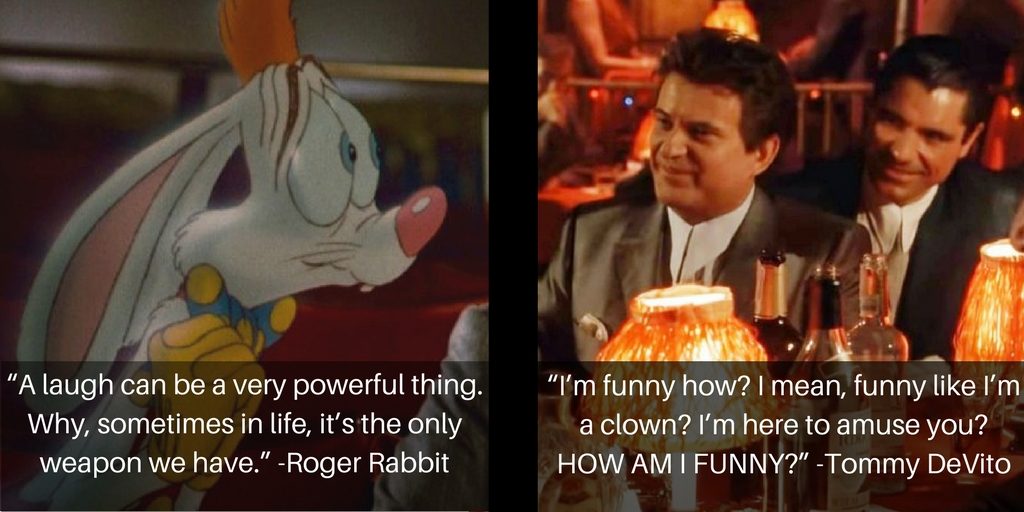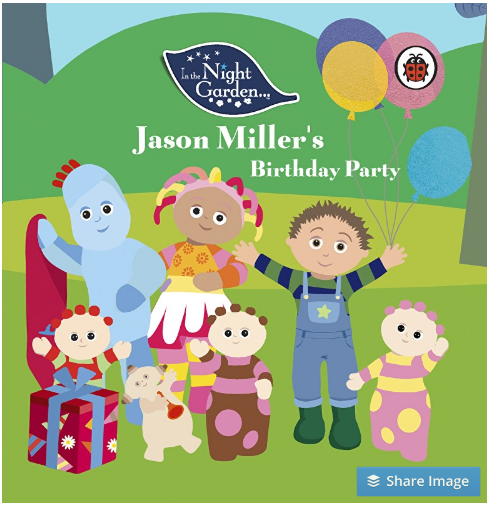Everyone likes a good joke. Everyone wants to be entertained. But when it comes to using humor in content marketing, people still hesitate. We are, after all, not here purely to entertain. Our content needs to serve a business purpose, inspire action, and rack up the sweet, sweet conversions.
Can potential buyers really take your brand seriously if you make them laugh?
I call this the Roger Rabbit/Goodfellas conundrum, best expressed by these two quotes:

How do you get the Roger Rabbit benefits of making people laugh, without becoming a Joe Pesci-esque laughingstock?
It can be done. You can still be funny and do serious business. The question is not whether to use humor in your content, but how you use it.
I believe humor serves a different purpose throughout the three loosely-defined stages of a buyer’s journey. Call them top, middle, and bottom of funnel. Or call them Attract, Engage, and Convert, as our team does. The idea is the same: How you use humor should change depending on your context.
Top of Funnel: Pure Comedy Gold
Top of Funnel content can be mostly comedy – designed exclusively to entertain people. This is what we call a “chocolate cake” or “dessert” post. The key difference between, say, a Buzzfeed post about funny tweets and your top-of-funnel content is that yours will be focused on a very specific audience.
Use humor as a way of showing your audience that you understand them. That you’re one of them. Make jokes only they will get, and you will invite them into your tribe.
That’s what I did with my “20 Jokes Only a B2B Marketer Will Get.” I called out the audience in the title, and made sure each joke used vocabulary and common experiences that only the intended audience would share. The result: One of the most-shared posts on the TopRank Marketing Blog this year.
Middle of Funnel: Humor + Value
In the middle of the funnel—what we call the “Engage” stage—comedy is still a welcome component of your content. But unlike, top of funnel, the comedy can’t be the main attraction. You’ve already brought your audience in. Now you have to provide value beyond a chuckle or two.
Start with a legitimately useful premise, and use humor to demonstrate personality and keep your content readable. For example, the introduction to this post on video content marketing on a budget starts with a funny intro and a truly hilarious image. Images are a great way to introduce a little humor, by the way—especially if you’re on a WordPress blog and the image can show up in the excerpt.
You don’t have to confine humor to the introduction; just don’t forget the value. This post from Jason Miller at LinkedIn is a good example of a funny post that still has plenty to offer the audience. It uses the silly names and weird visuals of a BBC kids show to teach some solid content marketing lessons. And it gave Jason the excuse to make a personalized kid’s book cover:

Bottom of Funnel: Keep It Consistent
By the time your customer is almost ready to make a purchase decision, you don’t need to keep throwing out the punchlines. They’re already sold on your brand’s personality; now they need to make sure your solution is the perfect fit.
Bottom-of-funnel content is by necessity more utilitarian, more focused on your offering. But you shouldn’t suddenly become all business all the time. Aim for a consistent brand voice throughout the buyer’s journey. You can still be lighthearted and informal on a landing page or a contact form.
This “Content Marketing Kitchen” post, for example, is an announcement post that serves chiefly to drive traffic to a landing page. I dialed back the jokes but kept the tone light and personal. The result: A bottom-of-funnel piece that still kept people entertained, as the comments show:

Good Humor Isn’t Just an Ice Cream Brand
The same comedic approach won’t work for every brand or every audience. People who love zany one-liners from a fast-food company likely don’t want the same from their bank. It’s important to find the degree of comedy that puts you firmly on the Roger Rabbit side of the equation.
That said, if you keep your level of humor appropriate for the stage of the buyer’s journey, you can attract your audience, engage them with entertaining but valuable content, then convert with the same sense of personality and fun that attracted them to begin with.
Learn more about humor in content marketing from a master of the form in this interview with Tim Washer.
LinkedIn Marketing is a TopRank Marketing client.



